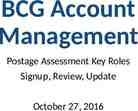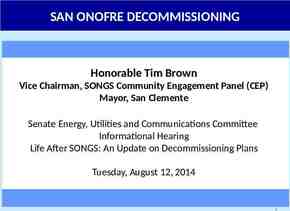Self-Care Practices to Build Resilience & Overcome Workplace Stress
45 Slides5.92 MB

Self-Care Practices to Build Resilience & Overcome Workplace Stress & Vicarious Trauma

Emotional Resilience

Rate of suicide among attorneys is 6X higher than that of the general population Attorneys are 2x as likely as general population to suffer substance abuse and other addictive disorders Attorneys are the most frequently depressed occupational group in the U.S., and attorneys are 3.6X more likely to suffer from depression than non-attorneys Roughly half of practicing attorneys are experiencing symptoms of anxiety and depression (ABA National Taskforce on Lawyer Wellbeing, 2020 Report)

Well-being As An Ethical Responsibility Lawyer well-being influences ethics and professionalism, directly linking a lawyer’s wellness to the affirmative ethical duties of competence, diligence, truthfulness, communications, and relationships with people other than clients. Lawyers in distress: Are less likely to make decisions in own best interest Make professional errors in boundaries, judgment Are less self-reflective & unable to sort out own feelings & responses from those of client Fail to set limits, can overextend self Are less able to notice, analyze, use own feelings to guide them We have an ethical responsibility as lawyers and organizations to build a more sustainable culture for the legal profession “The expectation that we can be immersed in suffering and loss daily and not be touched by it is as unrealistic as expecting to be able to walk through water without getting wet.” (Remen, 2006)

Today We Will . Define Define the concepts of secondary/vicarious trauma, burnout, & compassion fatigue Discuss Discuss how exposure to clients’ traumatic stories and materials impacts attorneys Discuss Discuss the impact of vicarious trauma on organizations Assess Assess current level of functioning and self-care practices Identify Identify self-care strategies and organizational interventions that enhance both personal and professional resilience

Definitions Secondary/Vicarious Trauma Burnout: Continuous stress, with no relief Professional burnout can occur in any work setting, while vicarious/secondary trauma and compassion fatigue are unique to direct practice with crisis and trauma populations. Compassion Fatigue: “the cost of caring” Attorneys May Face All Three!

Requires Organizational/Systemic Response Requires Individual Response

Burnout Results from chronic workplace stress that has not been managed Typically associated with the three dimensions of exhaustion, cynicism, and sense of inefficacy Emphasis is on workplace dynamics 5 job factors that contribute to employee burnout: 1.High workload and unrealistic deadlines 2. Lack of communication and support/supervision from management 3. Lack of role clarity– expectations are “moving targets” 4.Lack of autonomy- little or no control over your work 5.Unfair treatment– favoritism, unfair compensation, lack of recognition etc. (Gallup, 2018)

Vicarious Trauma A process through which one’s inner experience is negatively transformed through empathic engagement with a survivor’s trauma material, which may mimic PTSD symptoms (Figley and Pearlman, 1995) An occupational hazard of working with survivors and their traumatic material

Change in worldview “ the transformation or change in a helper’s inner experience as a result of responsibility for and empathic engagement with traumatized clients.” (Saakvitne et al. 2000)

Risk Factors Personal Professional Trauma history Pre-existing psychological disorder Young age Higher levels of compassion Lack of quality supervision High percentage of trauma survivors in caseload Limited task diversity Unrealistic expectations (savior complex) Isolation, inadequate support system Loss in last 12 months Little experience Worker / organization mismatch Lack of professional support system Inadequate orientation and training for role (Bonach and Heckert, 2012; Slattery and Goodman, 2009; Bell, Kulkarni, et al, 2003; Cornille and Meyers, 1999)

Effects of Vicarious Trauma: Personal Physical CV changes, headaches, impaired immune system, fatigue Emotional Feelings of powerlessness, numbness, anxiety, guilt, fear, anger, hypersensitivity, sadness, helplessness, increased sensitivity to violence Behavioral Irritability, sleep/appetite changes, isolation, self-destructive behavior, hypervigilance, overly controlling, overprotective/fearful of children’s/one’s own safety, avoidance of triggers Spiritual Loss of purpose/meaning, questioning goodness versus evil, disillusionment, pervasive hopelessness Cognitive Diminished concentration,/attention, cynicism, pessimism, preoccupation with clients, traumatic imagery, self-doubt Relational Withdrawn, decreased interest in intimacy or sex, minimization of others’ concerns, projection of anger or blame, intolerance, mistrust (Adapted from J. Yassen in Figley, 1995)

Effects of Vicarious Trauma: Professional Performance Decrease in quality/quantity of work, low motivation, task avoidance or obsession with detail, working too hard, setting perfectionist standards, inattention/forgetfulness Morale Decreased confidence, decreased interest, negative attitude, apathy, dissatisfaction, feeling undervalued and unappreciated, disconnected, reduced compassion Relational Detached / withdrawn from co-workers, poor communication, conflict, impatience, intolerance of others, sense of being the “only one who can get the job done” Behavioral Calling out, arriving late, overwork, exhaustion, irresponsibility, poor follow-through (Adapted from J. Yassen in Figley, 1995)

Organizational Signs of Vicarious Trauma Three Key Indicators 1. High job turnover 2. Low morale (organizational contagion) 3. Decreased Productivity Unmanaged VT lessens employees’ complex decision-making capabilities Source: https://ovc.ojp.gov/sites/g/files/xyckuh226/files/media/document/imp making the business case-508.pdf

Stress Vicarious Trauma Sleeplessness due Sleeplessness due to workload to nightmares mirroring clients’ stories Call out sick from Call out sick work because what difference am I making anyway? Anxious about Worry and anxiety deadline about the safety of self, others, or client The Difference between Stress and Vicarious Trauma

Compassion fatigue vs. Compassion Satisfaction (Anewalt, 2009; Figley, 1995)

Ø38% of lawyers reported that they often work long hours, while another 9% reported that they “never stop working” Ø25% reported that they failed to take adequate breaks during their workday Ø32% reported that they felt pressured to refrain from taking vacation time ØDespite all the above evidence . ØThe great majority of lawyers (68%) said they agree with the statement “I make time for myself.”

How do you rate? Measuring CS & CF: The Professional Quality of Life Scale (ProQOL) A 30-item self report measure The most widely used measure of the positive and negative aspects of helping in the world Measures Compassion Satisfaction and Compassion Fatigue Scores on individual scales tell us about a person’s responses on each of the constructs Compassion Fatigue has two subscales Burnout Secondary Trauma Can be used to track an individual’s CS and CF Can help organizations find ways to maximize the positive aspects and reduce the negative aspects of helping

Addressin g Vicarious Trauma

“For many of us, the elaborate architecture we build around our hearts begins to resemble a fortress. We build up our defenses, but the trauma keeps on coming. We add a moat, we throw in some crocodiles, we forge more weapons, we build higher and higher walls. Sooner or later, we find ourselves locked in by the very defenses we have constructed for our own protection. We will find the key to our liberation only when we accept that what we once did to survive is now destroying us.” -Laura Van Dernoot Lipsky, Trauma Stewardship

Defining SelfCare Care The act and capacity to take care of yourself across all dimensions of your life The ability to engage in trauma work without sacrificing other important parts of your life The ability to maintain a positive attitude toward the work despite the challenges Your right to be well, safe, and fulfilled

Dimensions of self-care

Are we promising an impact? Or increasing its likelihood? A note on “hacking” Practical timelines versus idealized timelines in an intensive field. Two people who are ‘down’ can’t magically lift themselves, or one another, ‘up’. Boundaries – everyone’s favorite self-care buzzword.

Orientation to time / time boundaries / time management Hey, that’s great and all, but what’s in my control? Movement is your friend Faux self-regulation can actually pay off fake it ‘til you make it! “The details” – speech patterns, thought patterns, and daily routines Self-care isn’t everything

Vicarious TraumaInformed Organization A vicarious trauma-informed organization recognizes the challenges of working with traumatized populations and traumatic material and assumes the responsibility for proactively addressing the impact of vicarious trauma through policies, procedures, practices, and programs.

Resilience Resilience is the process of adapting well in the face of adversity, trauma, tragedy, threats, or even significant sources of stress, such as family and relationship problems, serious health problems, or workplace and financial stressors. At the heart of resilience is a belief in oneself— yet also a belief in something larger than oneself. People who are “stress-resistant” have developed the tools to integrate the experience of trauma into their lives and adapt (Hara Estroff Marano, “The Art of Resilience”; Laura van Dernoot Lipsky, Trauma Stewardship)

The ABC’s of Resilience personal professional organizational Laura van Dernoot Lipsky, Trauma Stewardship

Self-Care Isn’t Everything Self-care is not only about individual workers, it is also about organizations and communities Organizations have an ethical mandate of a “duty to train,” wherein workers are taught about the potential negative effects of the work and how to cope. (Munroe, J. F., in Figley, Compassion Fatigue, 1995) “When self-care is prescribed as the antidote for burnout, it puts the burden of working in unjust contexts onto the backs of us as individual workers.” -Vikki Reynolds

Leadership and Mission Management and Supervision Employee Empowerment and Work Environment Training and Professional Development Staff Health and Wellness Proactively integrate strategies into workplace values, operations, and practices; responding to staff needs; showing appreciation; open and transparent communication Promote policies and practices that lessen the negative impact of the work; a structured protocol for case review and team reflection Promotes peer support, team effectiveness; offer opportunities to diversify job tasks. Adequate, job-specific, ongoing, inclusive of VT Devotes priority and resources to sustaining practices Key Aspects of a Healthy, Vicarious TraumaInformed Organizati on

As part of transitioning to work or to a traumatic exposure event, it is also helpful to conduct a self “check-in” in order to ground yourself and focus on the task at hand. In order to adapt this framework for self check-ins, you ask yourself the following three questions: Before 1) How am I feeling today? 2) What is my goal for today/for this interaction? 3) Who can help me with this? The outcomes of this deliberate and repetitive transition ritual are increased awareness of feelings, improved ability to focus on the future rather than dwell on the past, and a stronger sense of community and support. (Potocky, M., & Guskovict, K. L., 2020)

In that moment, it is important for the professional to focus on the task at hand, stay present and grounded, and be aware of their physical responses such as breathing, posture, and body awareness. During In order to minimize the body’s chemical reaction in-exposure (e.g., cortisol dump), helping professionals can create distance or protection by taking a half step back or facing their palms forward in what is commonly referred to as a non-defensive stance. This subtle change sends a signal to the brain that you are safe and can immediately halt the fight, flight, or freeze reaction that may have been initiated due to a perceived threat. (Potocky, M., & Guskovict, K. L., 2020)

Immediately after exposure to a traumatic event or traumatic material, while still at work, is another important time to employ intentional self-care strategies in order to successfully process the recent exposure. Immediate ly After Positive self-care strategies include: body awareness, relaxation, movement techniques (e.g., simply go for a walk); breathing exercises (focus on breathing fully from your belly); visualization exercises (particularly those related to letting go of images; transitions to and from the trauma); redirected thinking or reframing; even drinking water can help to dilute the effect that the in-exposure chemical dump may have on your mind and body (Potocky, M., & Guskovict, K. L., 2020)

Later/Ongoing Self-care strategies that can be implemented later (outside of work) and in an ongoing fashion are typically the most commonly described self-care activities: regular practice of relaxation techniques (e.g., meditation) and/or physical movement and exercise; building and using broad support; taking care of your physical health (e.g., healthy eating, sleeping); having a life (and friends) outside of work; practicing spiritual renewal; focusing on the positive ways you have been impacted by your work, by creating transformational meaning and identifying vicarious resilience.

Created by Sandy Bloom, MD, and Joseph Foderaro, LCSW, BCD, the Sanctuary Model offers: Bonus: The Sanctuary Model “an evolving, whole system organizational change process that is organized around ‘Four Pillars’. These four pillars are integral parts of “creating community”: shared knowledge, shared values, shared language, and shared practice. (https://www.thesanctuaryinstitute.org)

Resources Specifically for Lawyers: Lawyer well-being Toolkit: https://perma.cc/GH97-9C8U Read the National Taskforce Report on Lawyer wellbeing: https://perma.cc/7RFW-JG64 Office for Victims Of Crimes-Vicarious trauma toolkit & Blueprint for a trauma-informed organization: https://ovc.ojp.gov/program/vtt/blueprint-for-a-vicarious-trauma-informed-organization AILA's Lawyer Well-Being Center (https://www.aila.org/practice/lawyer-well-being-center; under Law Practice heading at AILA.org; limited to AILA members). Addressing Burnout, Plus Well-Being Resource Highlights, AILA Doc. No. 21052035 (May 20, 2021) (https://www.aila.org/practice/management/tips/2021/addressing-burnout-plus-well-being-resource). Hannah C. Cartwright, Lindsay M. Harris, Liana M. Montecinos, & Anam Rahman, Vicarious Trauma and Ethical Obligations for Attorneys Representing Immigrant Clients, 2 AILA Law Journal 1, 23-40 (2020) ( https://digitalcommons.law.udc.edu/cgi/viewcontent.cgi?article 1030&context fac journal articles).

Resources Con’t For anyone: Changing Communities, Changing Lives (2012) This report prepared for SAMHSA describes trauma informed care as a social movement: tracing its history, the strong role of survivors, and the ongoing need to support organizational and system change. 10 pages. https://www.nasmhpd.org/sites/default/files/NCTIC Marketing Brochure FINAL(2).pdf Laying the Groundwork for Trauma-Informed Care (2018) A brief with practical recommendations for taking foundational steps towards becoming a trauma informed organization. It includes discussion of building awareness and generating buy-in, supporting a culture of staff wellness, hiring a workforce that embodies the values of trauma-informed care (with examples of trauma informed interview questions), and creating a safe physical, social, and emotional environment. 8 pages. https://www.chcs.org/media/Laying-the-Groundwork-for-TIC 012418.pdf Resisting Burnout & Vicarious Trauma with Connection (2018) In this series of short videos, Vikki Reynolds, PhD, RCC, describes a client-centred approach to resisting burnout and vicarious trauma that encourages collective care (as opposed to solely self-care), connection, and “justice-doing.” https://vikkireynolds.ca/opioid-epidemic-responses/ Developing Trauma Informed Organizations: A Tool Kit (2012) This Tool Kit is designed to help organizations improve the quality of services offered by integrating an understanding of the impact of trauma and violence into the organization’s policies, procedures, and interactions with those being served. It includes the principles for trauma-informed treatment, a self-assessment for provider organizations, an organizational assessment and ideas for using assessments to provide trauma-informed, integrated care, trauma informed supervision and staff competency in trauma informed care. 59 pages. https://healthrecovery.org/images/products/30 inside.pdf Hell Yeah Self Care (2017) A zine written by Dr. Meg-John Barker which addresses the topic of self-care from an academic, therapeutic and activist perspective. It discusses self-care in difficult times, types of self-care, and strategies for individuals in determining the best kind of self-care for them. 20 pages. https://rewriting-the-rules.com/wp-content/uploads/2017/02/HellYeahSelfCare.pdf Trauma Stewardship: An Everyday Guide to Caring for Self while Caring for Others and the Age of Overwhelm: Strategies for the Long Haul These two books by Laura van Dernoot Lipsky provide ideas and strategies for reducing harm, cultivating our ability to be decent and equitable, and acting with integrity https://traumastewardship.com

References Bell, Holly, Shanti Kulkarni, and Lisa Dalton. 2003. “Organizational Prevention of Vicarious Trauma.” Families in Society: The Journal of Contemporary Social Services 84(4): 463–470. doi:10.1606/1044-3894.131. Berger, William, Evandro Coutinho, Ivan Figueira, Carla Marques-Portella, Mariana Pires Luz, Thomas C. Neylan, Charles R. Marmar, and Mauro Vitor Mendlowicz. 2011. “Rescuers at Risk: A Systematic Review and Meta-Regression Analysis of the Worldwide Current Prevalence and Correlates of PTSD in Rescue Workers.” Social Psychiatry and Psychiatric Epidemiology 47(6): 1001–1011. doi:10.1007/s00127-0110408-2. Bonach, Kathryn, and Alex Heckert. 2012. “Predictors of Secondary Traumatic Stress among Children’s Advocacy Center Forensic Interviewers.” Journal of Child Sexual Abuse 21(3): 295–314. doi:10.1080/10538712.2012.647263. Bride, Brian E., Melissa Radey, and Charles R. Figley. 2007. “Measuring Compassion Fatigue.” Clinical Social Work Journal 35(3): 155–163. doi:10.1007/s10615-007-0091-7.

References Con’t Conrad, David, and Yvonne Kellar-Guenther. 2006. “Compassion Fatigue, Burnout, and Compassion Satisfaction Among Colorado Child Protection Workers.” Child Abuse & Neglect 30 (10): 1071–1080. doi:10.1016/j.chiabu.2006.03.009. Cornille, Thomas A., and Tracy Woodard Meyers. 1999. “Secondary Traumatic Stress Among Child Protective Service Workers: Prevalence, Severity and Predictive Factors.” Traumatology 5(1): 15–31. doi:10.1177/153476569900500105. Engstrom, David, Pilar Hernandez, and David Gangsei. 2008. “Vicarious Resilience: A Qualitative Investigation Into Its Description.” Traumatology 14(3): 13–21. doi:10.1177/1534765608319323. Farrell, Graham, and Ken Pease. 1993. Once Bitten, Twice Bitten: Repeat Victimisation and Its Implications for Crime Prevention. London: Home Office Police Research Group. Figley, Charles R. 1995. Compassion Fatigue: Coping With Secondary Traumatic Stress Disorder In Those Who Treat The Traumatized. 1st edition. New York: Routledge. Potocky, M., & Guskovict, K. L. (2020). Addressing Secondary Traumatic Stress: Models and Promising Practices. Grantmakers Concerned with Immigrants and Refugees.

References Con’t Gilfus, Mary E. 1999. “The Price of the Ticket: A Survivor-Centered Appraisal of Trauma Theory.” Violence Against Women 5(11): 1238–1257. doi:10.1177/1077801299005011002 Hernández, Pilar, David Gangsei, and David Engstrom. 2007. “Vicarious Resilience: A New Concept in Work With Those Who Survive Trauma.” Family Process 46(2): 229–241. doi:10.1111/j.1545-5300.2007.00206.x. Hudnall , Beth. 2002. “Measuring Compassion Satisfaction as Well as Fatigue: Developmental History of the Compassion Satisfaction and Fatigue Test.” In Treating Compassion Fatigue, 107–119. Psychosocial Stress Series, No. 24. New York, NY, US: Brunner-Routledge. Janoff-Bulman, Ronnie. 1992. Shattered Assumptions: Towards a New Psychology of Trauma. New York: Free Press. Kessler, Ronald C., Johan Ormel, Maria Petukhova, Katie A. McLaughlin, Jennifer Greif Green, Leo J. Russo, Dan J. Stein, et al. 2011. “Development of Lifetime Comorbidity in the World Health Organization World Mental Health Surveys.” Archives of General Psychiatry 68(1): 90–100. doi:10.1001/archgenpsychiatry.2010.180.

ABC’s In Action: SelfCare Strategies for Trauma Integration

Self-care assessment & Planning https://www.brown.edu/campus-life/health/services/promotion/sites/h ealthpromo/files/self%20care%20assessment%20and%20planning.pdf










